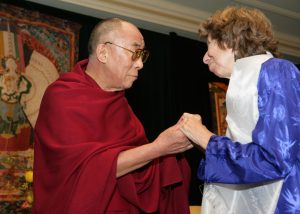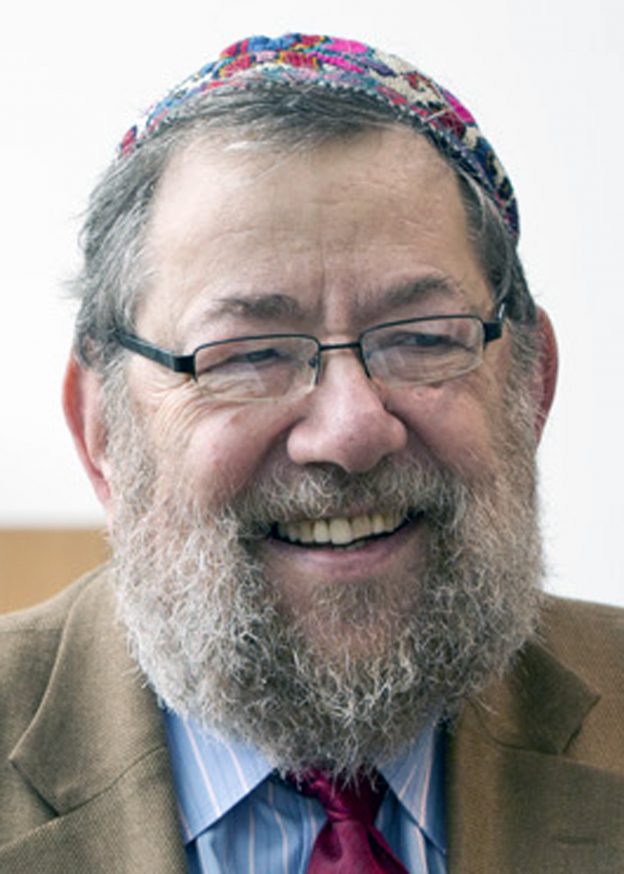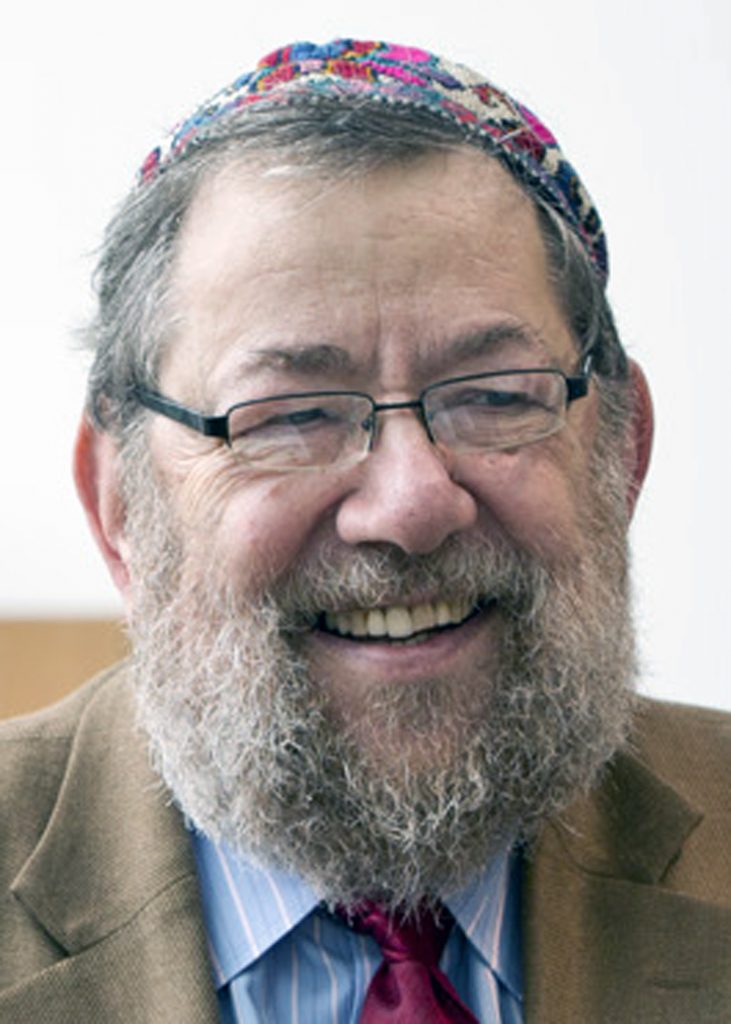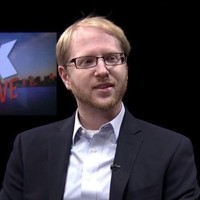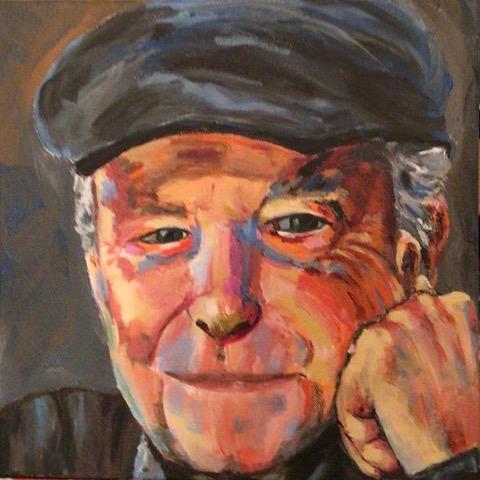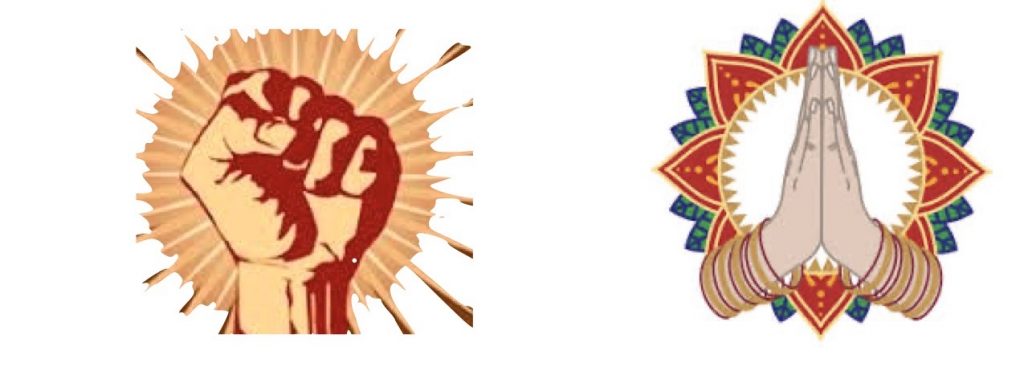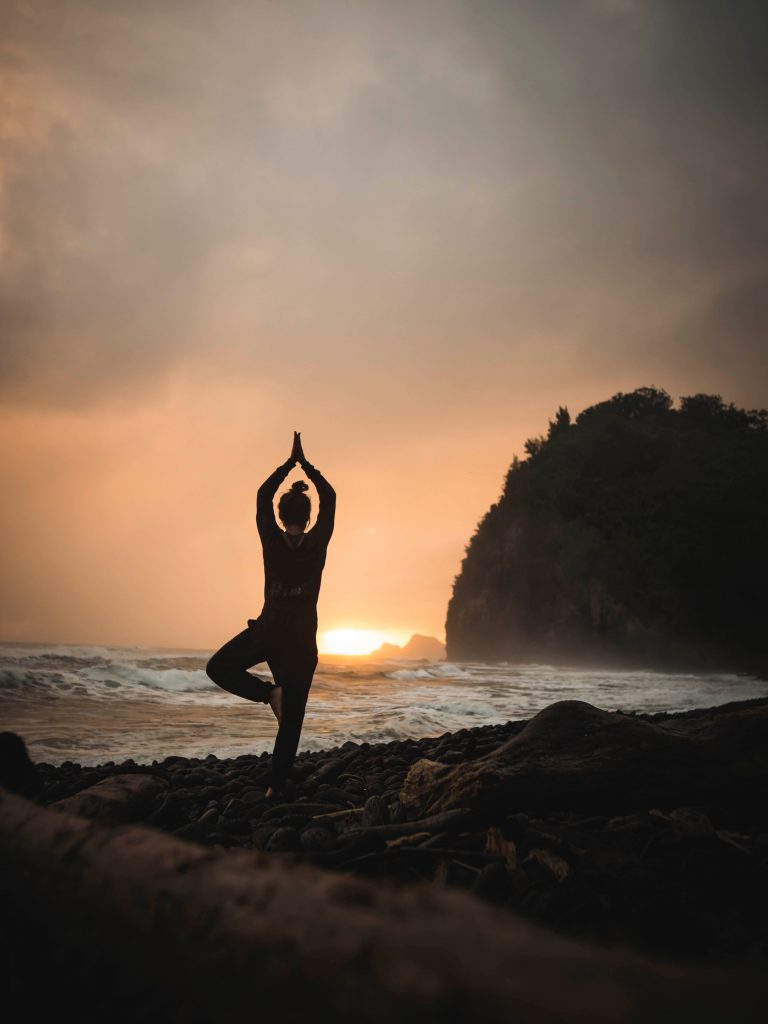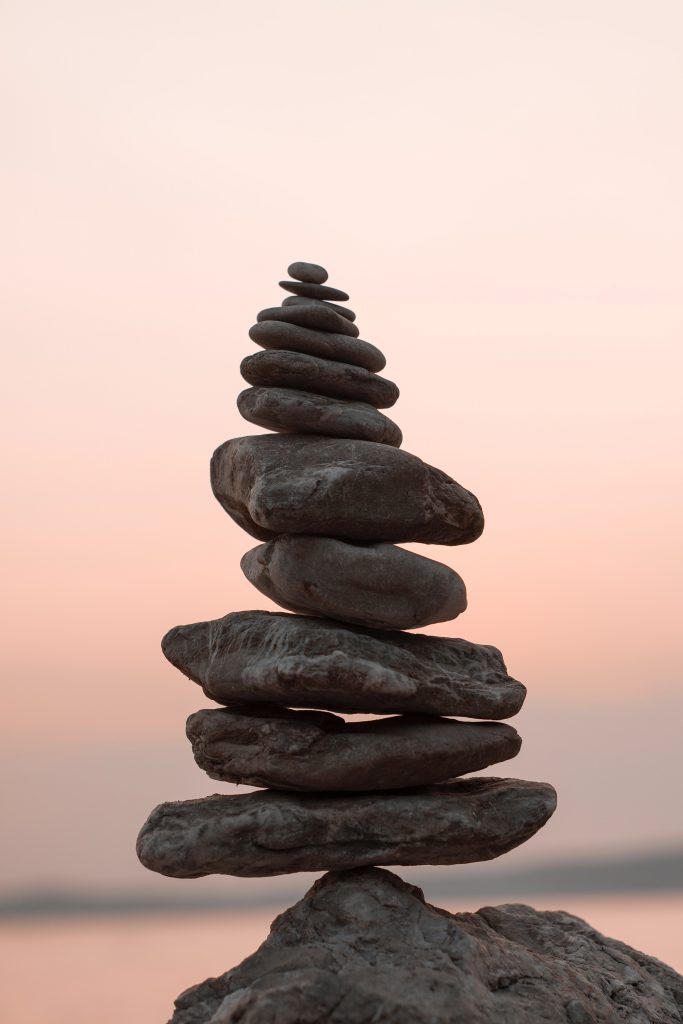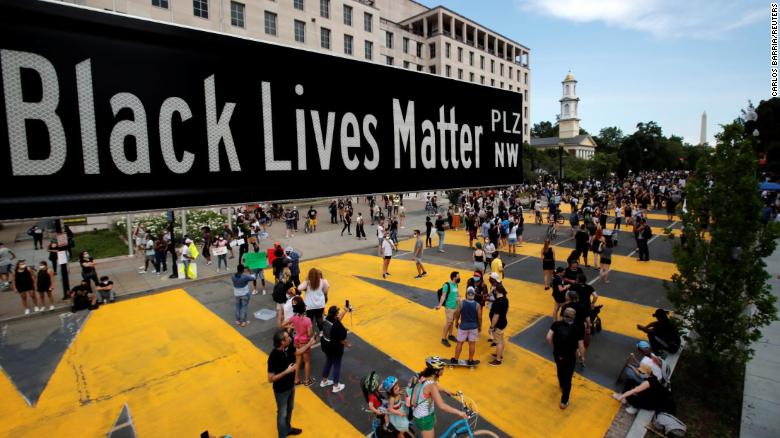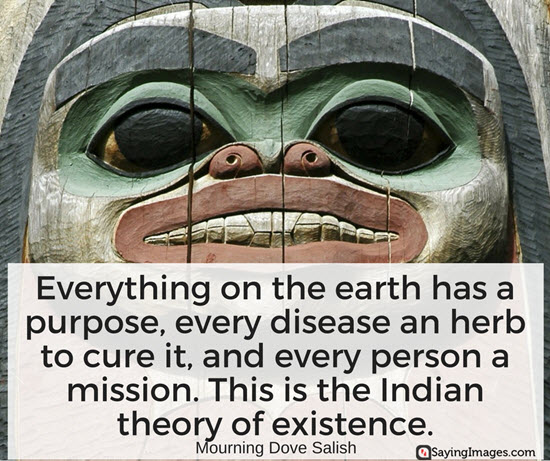“Do not get lost in a sea of despair.
Be hopeful, be optimistic.
Our struggle is not the struggle of a day, a week, a month, or a year,
it is the struggle of a lifetime.
“Never, ever be afraid to make some noise
and get in good trouble, necessary trouble.”
— John Lewis
I was getting prepared to send a message recommending you see “John Lewis – Good Trouble,” the wonderful, biopic film about John Lewis, when I heard about his passing. I’d also recently read much of his graphic novel trilogy on the civil rights movement, March. It brings deep insights and reminders of that short but intense period in the centuries long journey for America to come to terms with just what we have done and are still doing.
John Lewis really believed and lived as though love is the answer to hate, a love that is not afraid of hate; a love that is fierce and strong and willing to confront hate. As the tributes pour in I am, like some friends, suspicious of those coming from those who opposed him at every turn. On the other hand, when I try to imagine John Lewis’s view, I see the possibility that there is a crack in even the stone cold, racist heart that lets the light in. It will come crashing through, if just for a moment, in the presence of a life being lived in righteousness.
We’ve yet to see how the unprecedented awakening that is happening now will play out. The consciousness that moved those who beat John almost to death more than once is still here. The economic and political systems that manifest that consciousness are still here. There is no way forward but to fully face what we as a nation have done and make it right. The word “reparations” has been a non-starter for mainstream America for a lot of reasons, yet now it is beginning to emerge as a legitimate, if not necessary, medicine for the wounds that have been inflicted.
I’m posting below an article, “What is Owed,” by Nikole Hannah-Jones. I think it sheds light on this as clearly as I’ve seen it. (It’s somewhat long, but I think very much worth your time).
I grew up with liberal parents who supported the “civil rights movement” yet were steeped, as I became, in the assumption that White people were superior to non-White. Just a simple fact that it took me years to actually face. As our eyes are opened to our part in contributing to, or having stood by as our brothers and sisters suffered injustice, may we find the wisdom, empathy and strength to free ourselves and others from the grip of the virulent virus of white supremacy. In that work, may we truly learn from and embody the nonviolence and fierce love to which John Lewis committed his life.
May his journey continue in peace.
(I really hope you take the time to read the following article. I think it should be required reading for every American. If you go to the link you can see the article with many photos illustrating the history and present reality. ~Alan)
“What is Owed,” by Nikole Hannah-Jones
https://www.nytimes.com/interactive/2020/06/24/magazine/reparations-slavery.html?smid=em-share
It feels different this time.
Black Americans protesting the violation of their rights are a defining tradition of this country. In the last century, there have been hundreds of uprisings in black communities in response to white violence. Some have produced substantive change. After the assassination of the Rev. Dr. Martin Luther King Jr. in 1968, uprisings in more than 100 cities broke the final congressional deadlock over whether it should be illegal to deny people housing simply because they descended from people who had been enslaved. The Fair Housing Act, which prohibits housing discrimination on the basis of race, gender and religion, among other categories, seemed destined to die in Congress as white Southerners were joined by many of their Northern counterparts who knew housing segregation was central to how Jim Crow was accomplished in the North. But just seven days after King’s death, President Lyndon B. Johnson signed the act into law from the smoldering capital, which was still under protection from the National Guard.
Most of the time these uprisings have produced hand-wringing and consternation but few necessary structural changes. After black uprisings swept the nation in the mid-1960s, Johnson created the Kerner Commission to examine their causes, and the report it issued in 1968 recommended a national effort to dismantle segregation and structural racism across American institutions. It was shelved by the president, like so many similar reports, and instead white Americans voted in a “law and order” president, Richard Nixon. The following decades brought increased police militarization, law-enforcement spending and mass incarceration of black Americans.
The changes we’re seeing today in some ways seem shockingly swift, and in other ways rage-inducingly slow. After years of black-led activism, protest and organizing, the weeks of protests since George Floyd’s killing have moved lawmakers to ban chokeholds by police officers, consider stripping law enforcement of the qualified immunity that has made it almost impossible to hold responsible officers who kill, and discuss moving significant parts of ballooning police budgets into funding for social services. Black Lives Matter, the group founded in 2013 by three black women, Patrisse Khan-Cullors, Alicia Garza and Opal Tometi, after the acquittal of Trayvon Martin’s killer, saw its support among American voters rise almost as much in the two weeks after Floyd’s killing than in the last two years. According to polling by Civiqs, more than 50 percent of registered voters now say they support the movement.
The cascading effect of these protests has been something to behold. The commissioner of the N.F.L., which blackballed Colin Kaepernick for daring to respectfully protest police brutality, announced that the N.F.L. had, in fact, been wrong and that black lives actually do matter. (Kaepernick, on the other hand, still has no job.) HBO Max announced that it would temporarily pull from its roster the Lost Cause propaganda film “Gone With the Wind” — which in classically American fashion holds the spot as the highest-grossing feature film of all time. NASCAR came to the sudden realization that its decades-long permissiveness toward fans’ waving the battle flag of a traitorous would-be nation that fought to preserve the right to traffic black people was, in fact, contrary to its “commitment to providing a welcoming and inclusive environment for all fans, our competitors and our industry.” Bubba Wallace, the only full-time black driver at the sport’s top level, who had called on NASCAR to make the move, drove victory laps in an all-black stock car emblazoned with the words “#BLACKLIVESMATTER.”
Multiracial groups of Americans have defaced or snatched down monuments to enslavers and bigots from Virginia to Philadelphia to Minneapolis and New Mexico, leading local and state politicians to locate the moral courage to realize that they indeed did have the power to purge from public spaces icons to white supremacy. Even the University of Alabama, the place where Gov. George Wallace quite literally stood in the schoolhouse door to try to block the court-ordered admission of two black students, a place whose Grecian-columned campus and still largely segregated sororities pose the living embodiment of Dixie, is removing three plaques honoring Confederate soldiers and will study whether to rename buildings holding the monikers of enslavers and white supremacists after a student-led campaign garnered more than 17,000 signatures.
Unlike so many times in the past, in which black people mostly marched and protested alone to demand recognition of their full humanity and citizenship, a multiracial and multigenerational protest army has taken to the streets over the last month. They’ve spread across all 50 states in places big and small, including historically all-white towns like Vidor, Texas, where as recently as 1993 a federal judge had to order its public housing integrated. Shortly after, white supremacists ran out of town the handful of black people who had moved in. That Vidor, Texas, which remains 91 percent white and 0.5 percent black, held a Black Lives Matter rally in early June. In countries as disparate as England, Brazil, Kenya and Turkey, crowds pumped fists and carried signs with George Floyd’s name.
And this month, a Monmouth University poll showed that 76 percent of Americans, and 71 percent of white Americans, believe that racial and ethnic discrimination is a “big problem” in the United States. Just a few years ago, little more than half of white Americans believed that. The numbers in the Monmouth poll were so high that it left some political scientists questioning the poll’s quality.
“This number is crazy,” Hakeem Jefferson, a Stanford University political scientist, told me. “When I saw it, I thought, ‘This is a polling error.’ So I did what good social scientists do. I opened the methodological report, worried that they had done a weird sampling. But this is high-quality data.”
It is hard in the midst of something momentous to pinpoint exactly what has caused it. What we’re seeing is most likely a result of unrelenting organizing by the Black Lives Matter movement. It’s the pandemic, which virtually overnight left staggering numbers of Americans without enough money to buy food, pay rent and sustain their businesses. For many white Americans who may have once, consciously or unconsciously, looked down upon this nation’s heavily black and brown low-wage service workers, Covid-19 made them realize that it was the delivery driver and grocery clerk and meatpacker who made it possible for them to remain safely sequestered in their homes — and these workers were dying for it. Black Americans, in particular, have borne a disproportionate number of deaths from both Covid-19 and law enforcement, and many nonblack protesters have reasoned that black people should not have to risk their lives alone in taking to the streets demanding that the state not execute its citizens without consequence. And as they did, white Americans both in the streets and through the screens of their phones and televisions got a taste of the wanton police violence that black Americans regularly face. They saw the police beating up white women, pushing down an elderly white man and throwing tear gas and shooting rubber bullets at demonstrators exercising their democratic right to peacefully protest.
With so many Americans working from home or not working at all, they have had the time to show up to protests every day. These protests not only give Americans who are not black a moral reason to leave their homes after weeks of social isolation; they also allow protesters to vent anger at the incompetence of the man in the White House, himself a product of this nation’s inability to escape its death pact with white supremacy, who they sense is imperiling this terribly flawed but miraculous country.
It has been more than 150 years since the white planter class last called up the slave patrols and deputized every white citizen to stop, question and subdue any black person who came across their paths in order to control and surveil a population who refused to submit to their enslavement. It has been 150 years since white Americans could enforce slave laws that said white people acting in the interest of the planter class would not be punished for killing a black person, even for the most minor alleged offense. Those laws morphed into the black codes, passed by white Southern politicians at the end of the Civil War to criminalize behaviors like not having a job. Those black codes were struck down, then altered and over the course of decades eventually transmuted into stop-and-frisk, broken windows and, of course, qualified immunity. The names of the mechanisms of social control have changed, but the presumption that white patrollers have the legal right to kill black people deemed to have committed minor infractions or to have breached the social order has remained.
In a country erected on the explicitly codified conviction that black lives mattered less, graveyards across this land hold the bodies of black Americans, men, women and children, legally killed by the institutional descendants of those slave patrols for alleged transgressions like walking from the store with Skittles, playing with a toy gun in the park, sleeping in their homes and selling untaxed cigarettes. We collectively know only a small number of their names: Michael Brown, Tamir Rice, Trayvon Martin, Kendra James, Breonna Taylor, Rekia Boyd, Eric Garner, Aiyana Stanley-Jones and Tanisha Anderson are just a few.
And because of what is happening now, George Floyd’s name will forever stand out since enough Americans have decided that his death mattered.
What has spawned this extraordinary reckoning, the fire this time, was our collective witness of what must be described without hyperbole as a modern-day lynching. In his 1933 book, “The Tragedy of Lynching,” the sociologist Arthur F. Raper estimated that, based on his study of 100 lynchings, white police officers participated in at least half of all lynchings and that in 90 percent of others law-enforcement officers “either condone or wink at the mob action.” The nonchalant look on Officer Derek Chauvin’s face — as, hand in pocket, for 8 minutes 46 seconds, he pressed his knee against the neck of a facedown black man begging for his life — reminds me of every callous white face captured in the grisly photos taken in the 1900s to mark the gleeful spectacle of the public killings of black men and women.
It devastates black people that all the other black deaths before George Floyd did not get us here. It devastates black people to recall all the excuses that have come before. That big black boy, Michael Brown, must have charged the weapon-carrying officer. Eric Garner should have stopped struggling. Breonna Taylor’s boyfriend had a weapon in her home and shouldn’t have shot at the people who, without a knock or an announcement, burst through her door. We’re not sure what Ahmaud Arbery was doing in that predominantly white neighborhood. Rayshard Brooks, who in the midst of nationwide protests against police violence was shot in the back twice by a police officer, just shouldn’t have resisted.
It should devastate us all that in 2020 it took a cellphone video broadcast across the globe of a black man dying from the oldest and most terrifying tool in the white-supremacist arsenal to make a vast majority of white Americans decide that, well, this might be enough.
We, now, have finally arrived at the point of this essay. Because when it comes to truly explaining racial injustice in this country, the table should never be set quickly: There is too much to know, and yet we aggressively choose not to know it.
No one can predict whether this uprising will lead to lasting change. History does not bode well. But there does seem to be a widespread acceptance of the most obvious action we could take toward equality in a nation built on the espoused ideals of inalienable, universal rights: pass reforms and laws that ensure that black people cannot be killed by armed agents of the state without consequence.
But on its own, this cannot bring justice to America. If we are truly at the precipice of a transformative moment, the most tragic of outcomes would be that the demand be too timid and the resolution too small. If we are indeed serious about creating a more just society, we must go much further than that. We must get to the root of it.
Fifty years since the bloody and brutally repressed protests and freedom struggles of black Americans brought about the end of legal discrimination in this country, so much of what makes black lives hard, what takes black lives earlier, what causes black Americans to be vulnerable to the type of surveillance and policing that killed Breonna Taylor and George Floyd, what steals opportunities, is the lack of wealth that has been a defining feature of black life since the end of slavery.
Wealth, not income, is the means to security in America. Wealth — assets and investments minus debt — is what enables you to buy homes in safer neighborhoods with better amenities and better-funded schools. It is what enables you to send your children to college without saddling them with tens of thousands of dollars of debt and what provides you money to put a down payment on a house. It is what prevents family emergencies or unexpected job losses from turning into catastrophes that leave you homeless and destitute. It is what ensures what every parent wants — that your children will have fewer struggles than you did. Wealth is security and peace of mind. It’s not incidental that wealthier people are healthier and live longer. Wealth is, as a recent Yale study states, “the most consequential index of economic well-being” for most Americans. But wealth is not something people create solely by themselves; it is accumulated across generations.
While unchecked discrimination still plays a significant role in shunting opportunities for black Americans, it is white Americans’ centuries-long economic head start that most effectively maintains racial caste today. As soon as laws began to ban racial discrimination against black Americans, white Americans created so-called race-neutral means of maintaining political and economic power. For example, soon after the 15th Amendment granted black men the right to vote, white politicians in many states, understanding that recently freed black Americans were impoverished, implemented poll taxes. In other words, white Americans have long known that in a country where black people have been kept disproportionately poor and prevented from building wealth, rules and policies involving money can be nearly as effective for maintaining the color line as legal segregation. You do not have to have laws forcing segregated housing and schools if white Americans, using their generational wealth and higher incomes, can simply buy their way into expensive enclaves with exclusive public schools that are out of the price range of most black Americans.
It has worked with impressive efficiency. Today black Americans remain the most segregated group of people in America and are five times as likely to live in high-poverty neighborhoods as white Americans. Not even high earnings inoculate black people against racialized disadvantage. Black families earning $75,000 or more a year live in poorer neighborhoods than white Americans earning less than $40,000 a year, research by John Logan, a Brown University sociologist, shows. According to another study, by the Stanford sociologist Sean Reardon and his colleagues, the average black family earning $100,000 a year lives in a neighborhood with an average annual income of $54,000. Black Americans with high incomes are still black: They face discrimination across American life. But it is because their families have not been able to build wealth that they are often unable to come up with a down payment to buy in more affluent neighborhoods, while white Americans with lower incomes often use familial wealth to do so.
The difference between the lived experience of black Americans and white Americans when it comes to wealth — along the entire spectrum of income from the poorest to the richest — can be described as nothing other than a chasm. According to research published this year by scholars at Duke University and Northwestern University that doesn’t even take into account the yet-unknown financial wreckage of Covid-19, the average black family with children holds just one cent of wealth for every dollar that the average white family with children holds.
As President Johnson, architect of the Great Society, explained in a 1965 speech titled “To Fulfill These Rights”: “Negro poverty is not white poverty. … These differences are not racial differences. They are solely and simply the consequence of ancient brutality, past injustice and present prejudice. They are anguishing to observe. For the Negro they are a constant reminder of oppression. For the white they are a constant reminder of guilt. But they must be faced, and they must be dealt with, and they must be overcome; if we are ever to reach the time when the only difference between Negroes and whites is the color of their skin.”
We sometimes forget, and perhaps it is an intentional forgetting, that the racism we are fighting today was originally conjured to justify working unfree black people, often until death, to generate extravagant riches for European colonial powers, the white planter class and all the ancillary white people from Midwestern farmers to bankers to sailors to textile workers, who earned their living and built their wealth from free black labor and the products that labor produced. The prosperity of this country is inextricably linked with the forced labor of the ancestors of 40 million black Americans for whom these marches are now occurring, just as it is linked to the stolen land of the country’s indigenous people. Though our high school history books seldom make this plain: Slavery and the 100-year period of racial apartheid and racial terrorism known as Jim Crow were, above all else, systems of economic exploitation. To borrow from Ta-Nehisi Coates’s phrasing, racism is the child of economic profiteering, not the father.
Numerous legal efforts to strip black people of their humanity existed to justify the extraction of profit. Beginning in the 1660s, white officials ensured that all children born to enslaved women would also be enslaved and belong not to their mothers but to the white men who owned their mothers. They passed laws dictating that the child’s status would follow that of the mother not the father, upending European norms and guaranteeing that the children of enslaved women who were sexually assaulted by white men would be born enslaved and not free. It meant that profit for white people could be made from black women’s wombs. Laws determining that enslaved people, just like animals, had no recognized kinship ties ensured that human beings could be bought and sold at will to pay debts, buy more acres or save storied universities like Georgetown from closing. Laws barred enslaved people from making wills or owning property, distinguishing black people in America from every other group on these shores and assuring that everything of value black people managed to accrue would add to the wealth of those who enslaved them. At the time of the Civil War, the value of the enslaved human beings held as property added up to more than all of this nations’ railroads and factories combined. And yet, enslaved people saw not a dime of this wealth. They owned nothing and were owed nothing from all that had been built from their toil.
Slavery’s demise provided this nation the chance for redemption. Out of the ashes of sectarian strife, we could have birthed a new country, one that recognized the humanity and natural rights of those who helped forge this country, one that attempted to atone and provide redress for the unspeakable atrocities committed against black people in the name of profit. We could have finally, 100 years after the Revolution, embraced its founding ideals.
And, oh so briefly, during the period known as Reconstruction, we moved toward that goal. The historian Eric Foner refers to these 12 years after the Civil War as this nation’s second founding, because it is here that America began to redeem the grave sin of slavery. Congress passed amendments abolishing human bondage, enshrining equal protection before the law in the Constitution and guaranteeing black men the right to vote. This nation witnessed its first period of biracial governance as the formerly enslaved were elected to public offices at all levels of government. For a fleeting moment, a few white men listened to the pleas of black people who had fought for the Union and helped deliver its victory. Land in this country has always meant wealth and, more important, independence. Millions of black people, liberated with not a cent to their name, desperately wanted property so they could work, support themselves and be left alone. Black people implored federal officials to take the land confiscated from enslavers who had taken up arms against their own country and grant it to those who worked it for generations. They were asking to, as the historian Robin D.G. Kelley puts it, “inherit the earth they had turned into wealth for idle white people.”
In January 1865, Gen. William Tecumseh Sherman issued Special Field Order 15, providing for the distribution of hundreds of thousands of acres of former Confederate land issued in 40-acre tracts to newly freed people along coastal South Carolina and Georgia. But just four months later, in April, Lincoln was assassinated. Andrew Johnson, the racist, pro-Southern vice president who took over, immediately reneged upon this promise of 40 acres, overturning Sherman’s order. Most white Americans felt that black Americans should be grateful for their freedom, that the bloody Civil War had absolved any debt. The government confiscated the land from the few formerly enslaved families who had started to eke out a life away from the white whip and gave it back to the traitors. And with that, the only real effort this nation ever made to compensate black Americans for 250 years of chattel slavery ended.
Freed people, during and after slavery, tried again and again to compel the government to provide restitution for slavery, to provide at the very least a pension for those who spent their entire lives working for no pay. They filed lawsuits. They organized to lobby politicians. And every effort failed. To this day, the only Americans who have ever received government restitution for slavery were white enslavers in Washington, D.C., who were compensated for their loss of human property.
The way we are taught this in school, Lincoln “freed the slaves,” and then the nearly four million people who the day before had been treated as property suddenly enjoyed the privileges of being Americans like everyone else. We are not prodded to contemplate what it means to achieve freedom without a home to live in, without food to eat, a bed to sleep on, clothes for your children or money to buy any of it. Narratives collected of formerly enslaved people during the Federal Writers’ Project of the 1930s reveal the horrors of massive starvation, of “liberated” black people seeking shelter in burned-out buildings and scrounging for food in decaying fields before eventually succumbing to the heartbreak of returning to bend over in the fields of their former enslavers, as sharecroppers, just so they would not die. “With the advent of emancipation,” writes the historian Keri Leigh Merritt, “blacks became the only race in the U.S. ever to start out, as an entire people, with close to zero capital.”
In 1881, Frederick Douglass, surveying the utter privation in which the federal government left the formerly enslaved, wrote: “When the Hebrews were emancipated, they were told to take spoil from the Egyptians. When the serfs of Russia were emancipated, they were given three acres of ground upon which they could live and make a living. But not so when our slaves were emancipated. They were sent away empty-handed, without money, without friends and without a foot of land on which they could live and make a living. Old and young, sick and well, were turned loose to the naked sky, naked to their enemies.”
Just after the federal government decided that black people were undeserving of restitution, it began bestowing millions of acres in the West to white Americans under the Homestead Act, while also enticing white foreigners to immigrate with the offer of free land. From 1868 to 1934, the federal government gave away 246 million acres in 160-acre tracts, nearly 10 percent of all the land in the nation, to more than 1.5 million white families, native-born and foreign. As Merritt points out, some 46 million American adults today, nearly 20 percent of all American adults, descend from those homesteaders. “If that many white Americans can trace their legacy of wealth and property ownership to a single entitlement program,” Merritt writes, “then the perpetuation of black poverty must also be linked to national policy.”
The federal government turned its back on its financial obligations to four million newly liberated people, and then it left them without protection as well, as white rule was reinstated across the South starting in the 1880s. Federal troops pulled out of the South, and white Southerners overthrew biracial governance using violence, coups and election fraud.
The campaigns of white terror that marked the period after Reconstruction, known as Redemption, once again guaranteed an exploitable, dependent labor force for the white South. Most black Southerners had no desire to work on the same forced-labor camps where they had just been enslaved. But white Southerners passed state laws that made it a crime if they didn’t sign labor contracts with white landowners or changed employers without permission or sold cotton after sunset, and then as punishment for these “crimes,” black people were forcibly leased out to companies and individuals. Through sharecropping and convict leasing, black people were compelled back into quasi slavery. This arrangement ensured that once-devasted towns like Greenwood, Miss., were again able to call themselves the cotton capitals of the world, and companies like United States Steel secured a steady supply of unfree black laborers who could be worked to death, in what Douglass A. Blackmon, in his Pulitzer Prize-winning book, calls “slavery by another name.”
Yet black Americans persisted, and despite the odds, some managed to acquire land, start businesses and build schools for their children. But it was the most prosperous black people and communities that elicited the most vicious response. Lynchings, massacres and generalized racial terrorism were regularly deployed against black people who had bought land, opened schools, built thriving communities, tried to organize sharecroppers’ unions or opened their own businesses, depriving white owners of economic monopolies and the opportunity to cheat black buyers.
At least 6,500 black people were lynched from the end of the Civil War to 1950, an average of nearly two a week for nine decades. Nearly five black people, on average, have been killed a week by law enforcement since 2015.
The scale of the destruction during the 1900s is incalculable. Black farms were stolen, shops burned to the ground. Entire prosperous black neighborhoods and communities were razed by white mobs from Florida to North Carolina to Atlanta to Arkansas. One of the most infamous of these, and yet still widely unknown among white Americans, occurred in Tulsa, Okla., when gangs of white men, armed with guns supplied by public officials, destroyed a black district so successful that it was known as Black Wall Street. They burned more than 1,200 homes and businesses, including a department store, a library and a hospital, and killed hundreds who it is believed were buried in mass graves. In 2001, a commission on the massacre recommended that the state pay financial restitution for the victims, but the State Legislature refused. And this is the place that in the midst of weeks of protests crying out for black lives to matter, Donald Trump, nearly 100 years later, chose to restart his campaign rallies.
Even black Americans who did not experience theft and violence were continuously deprived of the ability to build wealth. They were denied entry into labor unions and union jobs that ensured middle-class wages. North and South, racist hiring laws and policies forced them into service jobs, even when they earned college degrees. They were legally relegated into segregated, substandard neighborhoods and segregated, substandard schools that made it impossible to compete economically even had they not faced rampant discrimination in the job market. In the South, for most of the period after the Civil War until the 1960s, nearly all the black people who wanted to earn professional degrees — law, medical and master’s degrees — had to leave the region to do so even as white immigrants attended state colleges in the former Confederacy that black American tax dollars helped pay for.
As part of the New Deal programs, the federal government created redlining maps, marking neighborhoods where black people lived in red ink to denote that they were uninsurable. As a result, 98 percent of the loans the Federal Housing Administration insured from 1934 to 1962 went to white Americans, locking nearly all black Americans out of the government program credited with building the modern (white) middle class.
“At the very moment a wide array of public policies was providing most white Americans with valuable tools to advance their social welfare — ensure their old age, get good jobs, acquire economic security, build assets and gain middle-class status — most black Americans were left behind or left out,” the historian Ira Katznelson writes in his book, “When Affirmative Action Was White.” “The federal government … functioned as a commanding instrument of white privilege.”
In other words, while black Americans were being systematically, generationally deprived of the ability to build wealth, while also being robbed of the little they had managed to gain, white Americans were not only free to earn money and accumulate wealth with exclusive access to the best jobs, best schools, best credit terms, but they were also getting substantial government help in doing so.
The civil rights movement ostensibly ended white advantage by law. And in the gauzy way white Americans tend to view history, particularly the history of racial inequality, the end of legal discrimination, after 350 years, is all that was required to vanquish this dark history and its effects. Changing the laws, too many Americans have believed, marked the end of the obligation. But civil rights laws passed in the 1960s merely guaranteed black people rights they should have always had. They dictated that from that day forward, the government would no longer sanction legal racial discrimination. But these laws did not correct the harm nor restore what was lost.
Brown v. Board of Education did not end segregated and unequal schools; it just ended segregation in the law. It took court orders and, at times, federal troops to see any real integration. Nevertheless, more than six decades after the nation’s highest court proclaimed school segregation unconstitutional, black children remain as segregated from white kids as they were in the early 1970s. There has never been a point in American history where even half the black children in this country have attended a majority-white school.
Making school segregation illegal did nothing to repay black families for the theft of their educations or make up for generations of black Americans, many of them still living, who could never go to college because white officials believed that only white students needed a high school education and so refused to operate high schools for black children. As late as the 1930s, most communities in the South, where the vast majority of black Americans lived, failed to provide a single public high school for black children, according to “The Education of Blacks in the South, 1860-1935,” by the historian James D. Anderson. Heavily black Richmond County in Georgia, for instance, did not provide a four-year black high school from 1897 to 1945.
The Fair Housing Act prohibited discrimination in housing, but it did not reset real estate values so that homes in redlined black neighborhoods whose prices were artificially deflated would be valued the same as identical homes in white neighborhoods, which had been artificially inflated. It did not provide restitution for generations of black homeowners forced into predatory loans because they had been locked out of the prime credit market. It did not repay every black soldier who returned from World War II to find that he could not use his G.I. Bill to buy a home for his family in any of the new whites-only suburbs subsidized by the same government he fought for. It did not break up the still-entrenched housing segregation that took decades of government and private policy to create. Lay those redlining maps over almost any city in America with a significant black population, and you will see that the government-sanctioned segregation patterns remain stubbornly intact and that those same communities bore the brunt of the predatory lending and foreclosure crisis of the late 2000s that stole years of black homeownership and wealth gains.
Making employment discrimination illegal did not come with a check for black Americans to compensate for all the high-paying jobs they were legally barred from, for the promotions they never got solely because of their race, for the income and opportunities lost to the centuries of discrimination. Nor did these laws end ongoing discrimination any more than speed limits without enforcement stop people from driving too fast. These laws opened up opportunities for limited numbers of black Americans while largely leaving centuries of meticulously orchestrated inequities soundly in place, but now with the sheen of colorblind magnanimity.
The inclination to bandage over and move on is a definitive American feature when it comes to anti-black racism and its social and material effects. A joint 2019 study by faculty members at Yale University’s School of Management, Department of Psychology and Institute for Social and Policy Studies describes this phenomenon this way: “A firm belief in our nation’s commitment to racial egalitarianism is part of the collective consciousness of the United States of America. … We have a strong and persistent belief that our national disgrace of racial oppression has been overcome, albeit through struggle, and that racial equality has largely been achieved.” The authors point out how white Americans love to play up moments of racial progress like the Emancipation Proclamation, Brown v. Board of Education and the election of Barack Obama, while playing down or ignoring lynching, racial apartheid or the 1985 bombing of a black neighborhood in Philadelphia. “When it comes to race relations in the United States … most Americans hold an unyielding belief in a specific, optimistic narrative regarding racial progress that is robust to counterexamples: that society has come a very long way already and is moving rapidly, perhaps naturally toward full racial equality.”
This remarkable imperviousness to facts when it comes to white advantage and architected black disadvantage is what emboldens some white Americans to quote the passage from Martin Luther King’s 1963 “I Have A Dream” speech about being judged by the content of your character and not by the color of your skin. It’s often used as a cudgel against calls for race-specific remedies for black Americans — while ignoring the part of that same speech where King says black people have marched on the capital to cash “a check which has come back marked ‘insufficient funds.’”
King has been evoked continuously during this season of protests, sometimes to defend those who looted and torched buildings, sometimes to condemn them. But in this time of foment, there has been an astounding silence around his most radical demands. The seldom-quoted King is the one who said that the true battle for equality, the actualization of justice, required economic repair.
After watching Northern cities explode even as his movement’s efforts to pass the 1964 Civil Rights Act and the 1965 Voting Rights Act came to fruition, King gave a speech in 1967 in Atlanta before the Hungry Club Forum, a secret gathering of white politicians and civil rights leaders.
King said: “For well now 12 years, the struggle was basically a struggle to end legal segregation. In a sense it was a struggle for decency. It was a struggle to get rid of all of the humiliation and the syndrome of depravation surrounding the system of legal segregation. And I need not remind you that those were glorious days. … It is now a struggle for genuine equality on all levels, and this will be a much more difficult struggle. You see, the gains in the first period, or the first era of struggle, were obtained from the power structure at bargain rates; it didn’t cost the nation anything to integrate lunch counters. It didn’t cost the nation anything to integrate hotels and motels. It didn’t cost the nation a penny to guarantee the right to vote. Now we are in a period where it will cost the nation billions of dollars to get rid of poverty, to get rid of slums, to make quality integrated education a reality. This is where we are now. Now we’re going to lose some friends in this period. The allies who were with us in Selma will not all stay with us during this period. We’ve got to understand what is happening. Now they often call this the white backlash. … It’s just a new name for an old phenomenon. The fact is that there has never been any single, solid, determined commitment on the part of the vast majority of white Americans to genuine equality for Negroes.”
A year later, in March 1968, just a month before his assassination, in a speech to striking, impoverished black sanitation workers in Memphis, King said: “Now our struggle is for genuine equality, which means economic equality. For we know that it isn’t enough to integrate lunch counters. What does it profit a man to be able to eat at an integrated lunch counter if he doesn’t have enough money to buy a hamburger?”
As we focus on police violence, we cannot ignore an even starker indication of our societal failures: Racial income disparities today look no different than they did the decade before King’s March on Washington. In 1950, according to a forthcoming study by the economists Moritz Schularick, Moritz Kuhn and Ulrike Steins in The Journal of Political Economy, black median household income was about half that of white Americans, and today it remains so. More critical, the racial wealth gap is about the same as it was in the 1950s as well. The typical black household today is poorer than 80 percent of white households. “No progress has been made over the past 70 years in reducing income and wealth inequalities between black and white households,” according to the study.
And yet most Americans are in an almost pathological denial about the depth of black financial struggle. That 2019 Yale University study, called “The Misperception of Racial Economic Inequality,” found that Americans believe that black households hold $90 in wealth for every $100 held by white households. The actual amount is $10.
About 97 percent of study participants overestimated black-white wealth equality, and most assumed that highly educated, high-income black households were the most likely to achieve economic parity with white counterparts. That is also wrong. The magnitude of the wealth gap only widens as black people earn more income.
“These data suggest that Americans are largely unaware of the striking persistence of racial economic inequality in the United States,” the study’s authors write. Americans, they write, tend to explain away or justify persistent racial inequality by ignoring the “tailwinds that have contributed to their economic success while justifying inequalities of wealth and poverty by invoking the role of individuals’ traits and skills as explanations for these disparities.” They use the exceptional examples of very successful black people to prove that systemic racism does not hold black Americans back and point to the large numbers of impoverished black people as evidence that black people are largely responsible for their own struggles.
In 2018, Duke University’s Samuel DuBois Cook Center on Social Equity and the Insight Center for Community Economic Development published a report called “What We Get Wrong About Closing the Racial Wealth Gap” that examined the common misperceptions about the causes of the racial wealth gap and presented data and social-science research that refutes them all.
The study shows that the racial wealth gap is not about poverty. Poor white families earning less than $27,000 a year hold nearly the same amount of wealth as black families earning between $48,000 and $76,000 annually. It’s not because of black spending habits. Black Americans have lower incomes over all but save at a slightly higher rate than white Americans with similar incomes. It’s not that black people need to value education more. Black parents, when controlling for household type and socioeconomic status, actually offer more financial support for their children’s higher education than white parents do, according to the study. And some studies have shown that black youths, when compared with white youths whose parents have similar incomes and education levels, are actually more likely to go to college and earn additional credentials.
But probably most astounding to many Americans is that college simply does not pay off for black Americans the way it does for other groups. Black college graduates are about as likely to be unemployed as white Americans with a high school diploma, and black Americans with a college education hold less wealth than white Americans who have not even completed high school. Further, because black families hold almost no wealth to begin with, black students are the most likely to borrow money to pay for college and then to borrow more. That debt, in turn, means that black students cannot start saving immediately upon graduation like their less-debt-burdened peers.
It’s not a lack of homeownership. While it’s true that black Americans have the lowest homeownership rates in the nation, simply owning a home is not the same asset that it is for white Americans. Black Americans get higher mortgage rates even with equal credit worthiness, and homes in black neighborhoods do not appreciate at the same rate as those in white areas, because housing prices are still driven by the racial makeup of communities. As the Duke University economist William Darity Jr., the study’s lead author, points out, the ability to purchase a home in the first place is seldom a result of just the hard work and frugality of the buyer. “It’s actually parental and grandparental wealth that facilitates the acquisition of a home.”
It’s not because a majority of black families are led by a single mother. White single women with children hold the same amount of wealth as single black women with no children, and the typical white single parent has twice the wealth of the typical two-parent black family.
To summarize, none of the actions we are told black people must take if they want to “lift themselves” out of poverty and gain financial stability — not marrying, not getting educated, not saving more, not owning a home — can mitigate 400 years of racialized plundering. Wealth begets wealth, and white Americans have had centuries of government assistance to accumulate wealth, while the government has for the vast history of this country worked against black Americans doing the same.
“The cause of the gap must be found in the structural characteristics of the American economy, heavily infused at every point with both an inheritance of racism and the ongoing authority of white supremacy,” the authors of the Duke study write. “There are no actions that black Americans can take unilaterally that will have much of an effect on reducing the wealth gap. For the gap to be closed, America must undergo a vast social transformation produced by the adoption of bold national policies.”
Darity has been studying and advocating reparations for 30 years, and this spring he and his partner, A. Kirsten Mullen, published the book “From Here to Equality: Reparations for Black Americans in the 21st Century.” Both history and road map, the book answers the questions about who should receive reparations and how a program would work. I will not spend much time on that here, except to make these few points. Reparations are not about punishing white Americans, and white Americans are not the ones who would pay for them. It does not matter if your ancestors engaged in slavery or if you just immigrated here two weeks ago. Reparations are a societal obligation in a nation where our Constitution sanctioned slavery, Congress passed laws protecting it and our federal government initiated, condoned and practiced legal racial segregation and discrimination against black Americans until half a century ago. And so it is the federal government that pays.
Reparations would go to any person who has documentation that he or she identified as a black person for at least 10 years before the beginning of any reparations process and can trace at least one ancestor back to American slavery. Reparations should include a commitment to vigorously enforcing existing civil rights prohibitions against housing, educational and employment discrimination, as well as targeted investments in government-constructed segregated black communities and the segregated schools that serve a disproportionate number of black children. But critically, reparations must include individual cash payments to descendants of the enslaved in order to close the wealth gap.
The technical details, frankly, are the easier part. The real obstacle, the obstacle that we have never overcome, is garnering the political will — convincing enough Americans that the centuries-long forced economic disadvantage of black Americans should be remedied, that restitution is owed to people who have never had an equal chance to take advantage of the bounty they played such a significant part in creating.
This country can be remarkably generous. Each year Congress allocates money — this year $5 million — to help support Holocaust survivors living in America. In backing the funding measure, Representative Richard E. Neal, a Democrat from Massachusetts, said in 2018 that this country has a “responsibility to support the surviving men and women of the Holocaust and their families.” And he is right. It is the moral thing to do. And yet Congress has refused for three decades to pass H.R. 40, a bill to simply study the issue of reparations. Its drafter, Representative John Conyers Jr., a Michigan Democrat and descendant of enslaved Americans, died in 2019 — during the 400th anniversary of the arrival of the first Africans enslaved in Virginia — without the bill ever making it out of committee.
There are living victims of racial apartheid and terrorism born in this country, including civil rights activists who lost their homes and jobs fighting to make this country a democracy, who have never received any sort of restitution for what they endured. Soon, like their enslaved ancestors, they will all be dead, too, and then we’ll hear the worn excuse that this country owes no reparations because none of the victims are still alive. Darity and Mullen call this the “delay until death” tactic. Procrastination, they say, does not erase what is owed.
The coronavirus pandemic has dispatched the familiar lament that even if it is the right thing to do, this nation simply cannot afford to make restitution to the 40 million descendants of American slavery. It took Congress just a matter of weeks to pass a $2.2 trillion stimulus bill to help families and businesses struggling from the Covid-19 shutdowns. When, then, will this nation pass a stimulus package to finally respond to the singularity of black suffering?
Colossal societal ruptures have been the only things potent enough to birth transformative racial change in this country, and perhaps a viral pandemic colliding with our nation’s 400-year racial one has forced that type of rupture today. Maybe it had to be this way; this deep and collective suffering was necessary for white Americans to feel enough of the pain that black Americans have always known to tilt the scale.
With Covid-19, black Americans face a financial catastrophe unlike any in nearly a century. Black Americans had already lost the largest share of their wealth of all racial groups as a result of the last recession and have struggled the most to recover. They are the only racial group whose household median income is less than it was in 2000. Today already more than half of black adults are out of work. Black businesses are withering. Their owners were almost completely shut out of the federal paycheck-protection program — just 12 percent of black and Latino business owners who applied for the small-business loans received the full amounts they requested, according to a Global Strategy Group survey last month. Nearly half the respondents said they would most likely shutter permanently within six months. Black children are expected to lose 10 months’ worth of academic gains because of school closures, more than any other group, and yet they attend the schools with the least resources already, schools that will have even fewer resources as states slash spending to make up for budget shortfalls. One in five black homeowners and one in four renters have missed at least one home payment since the shutdowns began — the highest of all racial groups.
The pandemic, Keeanga-Yamahtta Taylor, a scholar of social movements and racial inequality at Princeton University, told me, “has pulled what is hidden and buried on the bottom to the surface so that it can’t actually be ignored. It is a radicalizing factor because conditions that have been so dire, now combined with revolts in the street, might lead one to believe that not only is the society unraveling, but it might cause you to question what foundation it was built upon in the first place.”
Race-neutral policies simply will not address the depth of disadvantage faced by people this country once believed were chattel. Financial restitution cannot end racism, of course, but it can certainly mitigate racism’s most devastating effects. If we do nothing, black Americans may never recover from this pandemic, and they will certainly never know the equality the nation has promised.
So we are left with a choice. Will this moment only feel different? Or will it actually be different?
If black lives are to truly matter in America, this nation must move beyond slogans and symbolism. Citizens don’t inherit just the glory of their nation, but its wrongs too. A truly great country does not ignore or excuse its sins. It confronts them and then works to make them right. If we are to be redeemed, if we are to live up to the magnificent ideals upon which we were founded, we must do what is just.
It is time for this country to pay its debt. It is time for reparations.
Nikole Hannah-Jones is a staff writer for the magazine. In 2020, she won the Pulitzer Prize for commentary for her essay about black Americans and democracy. She is the creator of The 1619 Project, which won the National Magazine Award for public interest and a George Polk special award this year. She is also a 2017 MacArthur fellow.
